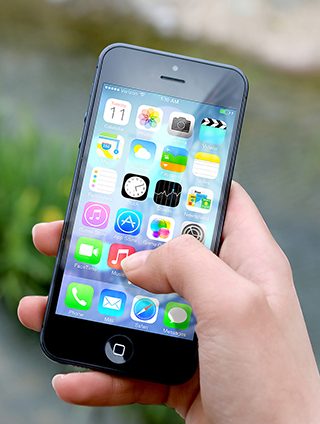 Artificial intelligence-driven health tools, including those built for mobile apps or other technologies, have the potential to conveniently delivery high-quality data and services to a growing share of the population, according to a recent JASON advisory report requested by and developed for HHS’ Office of the National Coordinator for Health IT (ONC). To do so, however, major players will need to be cognizant to the potential pitfalls AI will bring, and make directed efforts to prevent issues of privacy and security, mismanagement of growing datasets, access inequity, and the proliferation of misinformation for personal gain.
Artificial intelligence-driven health tools, including those built for mobile apps or other technologies, have the potential to conveniently delivery high-quality data and services to a growing share of the population, according to a recent JASON advisory report requested by and developed for HHS’ Office of the National Coordinator for Health IT (ONC). To do so, however, major players will need to be cognizant to the potential pitfalls AI will bring, and make directed efforts to prevent issues of privacy and security, mismanagement of growing datasets, access inequity, and the proliferation of misinformation for personal gain.
“Revolutionary changes in health and health care are already beginning in the use of smart devices to monitor individual health. Many of these developments are taking place outside of traditional diagnostic and clinical settings,” the advisory group wrote in its report. “In the future, AI and smart devices will become increasingly interdependent, including in health-related fields. On one hand, AI will be used to power many health-related mobile attachments and apps. On the other hand, mobile devices will create massive datasets that may open new possibilities in the development of AI-based health and health care tools.”
Representatives from the ONC said that they (and the Robert Wood Johnson Foundation) turned to JASON — an independent US government advisory panel made up of science and technology experts — on the topic of AI “to cut through the hype, assess the potential realistic implications of AI applications in health and healthcare, and understand the risks.”
While the JASON report looked at AI’s applications as a whole, a substantial portion was reserved for their role in mobile health. Here, the panel noted a handful of examples of AI-powered mobile device tools already in circulation, including Kardia Mobile’s FDA-cleared personal ECG and app; CloudUPDRS, an app that uses a smartphone’s gyroscope to analyze and quantify Parkinson’s tremors; and AsthmaMD’s handheld flow meter and app.
“These sorts of technologies can collect information of clear and vital importance to patients and use by clinicians, but we must again emphasize that each new data stream must be evaluated, collected and curated to formats consistent with clinical needs and AI applications,” the report’s authors wrote.
Alongside these tools comes a growing need for new data infrastructure to ingest the extensive data being generated by personal devices, they continued. Unfortunately, “significant steps forward to create such an infrastructure have not been forthcoming,” they wrote, an issue that they suggest may be lessened by providing the research community with increased access to captured data.
This solution does, however, bump against another pressing concern for the group: privacy. With a growing number of these personal data collection services also including the capacity to upload and transfer data — or even receive care remotely a la telehealth — US policymakers should require that new developments “include approaches to insure privacy and transparency of data use.” In addition, the government could look to DeepMind Health’s ongoing use of the UK's NHS data as “an early large scale experiment” and other implementations for useful solutions and mistakes to avoid.
AI-driven personal health technology could open the door for those looking to profiteering at the expense of others’ unfamiliarity with science or technology. Citing computer-aided skin cancer detection as an example, the group described a possibility of scam services asking patients to submit self-taken mole images and payment for unvalidated automatic diagnoses.
“There is enormous money to be made in the inevitable onset of internet-delivered diagnostics and care. This will promote the entry of all sorts of companies into this space, both meritorious and not,” they wrote. “To guard against the proliferation of misinformation in this emerging field, support the engagement of learned bodies to encourage and endorse best practices and deployment of AI applications in health.”
Finally, the group warned of the unintentional patterns of care inequity that may come with a healthcare landscape growing increasingly reliant on patients’ personal devices. Although they lauded data showing the increased adoption of smartphones across demographics as an opportunity to broaden the reach of care, not every group would have the means or education to purchase devices or use the AI-driven health apps.
“This may be a role for public health and other government subsidy programs. As various AI applications become useful and also demonstrate a cost savings in the management of health and health care, these products could be provided to qualifying individuals through programs similar to Supplemental Nutrition Assistance (SNAP), Temporary Assistance for Needy Families (TANF) cash assistance, and other medical assistance programs,” they wrote.













